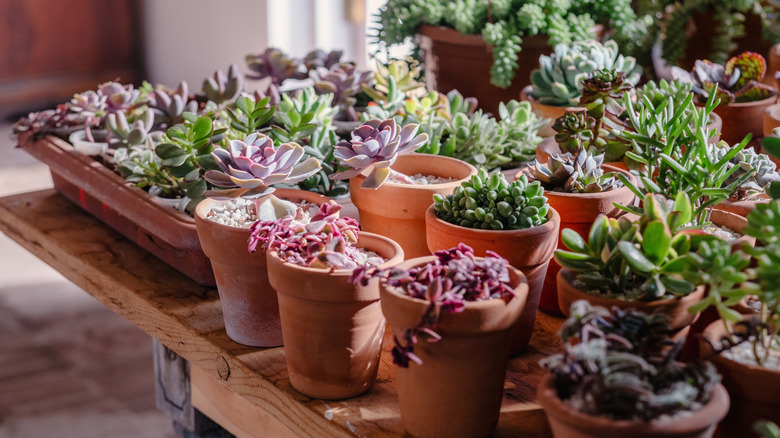Indoor Succulents Need A Massive Watering Schedule Change During Winter - Here's How To Do It
When winter starts and sunlight fades, the succulents you planted start to slow down. Most varieties go dormant, slowing their growth and taking up less water. A few keep growing at a slower, steadier pace. It's their natural survival strategy, which helps them to conserve energy, avoid excess moisture, and wait for warmth to return. And that's exactly why your watering schedule needs a complete change. Watering just once a month when temperatures drop below 40 degrees Fahrenheit works best for these easy beginner plants.
If you water too often it can do more harm than good. During winters, the indoor air is still and dry, and the soil can stay wet for days without proper drainage. That means trouble for roots. If your plants are near a heating vent, they might dry faster and need slightly more attention. So before you reach for the watering can, check the soil. If it's not completely dry, wait. Your succulents will thank you for the tough love.
Avoid overwatering your succulent with the help of a toothpick
Before reaching for the watering can, test your succulent with a simple toothpick trick. Gently poke a clean toothpick into the soil (it won't hurt your plant). Pull it out and check if the soil sticks to the toothpick or not. If it does then the soil is still moist and your plant doesn't need water. If the toothpick comes out clean, the soil is dry and it's time to water your succulent.
You might also notice the leaves looking a bit shriveled, which is another sign the roots are thirsty. Add water so that the soil is soaked. Succulents are among the houseplants that you barely need to water, so overdoing it can easily lead to rot. After watering, check for any standing water and remove it by gently tipping the pot. You can also blow it off with a straw, or blot it with a paper towel.

